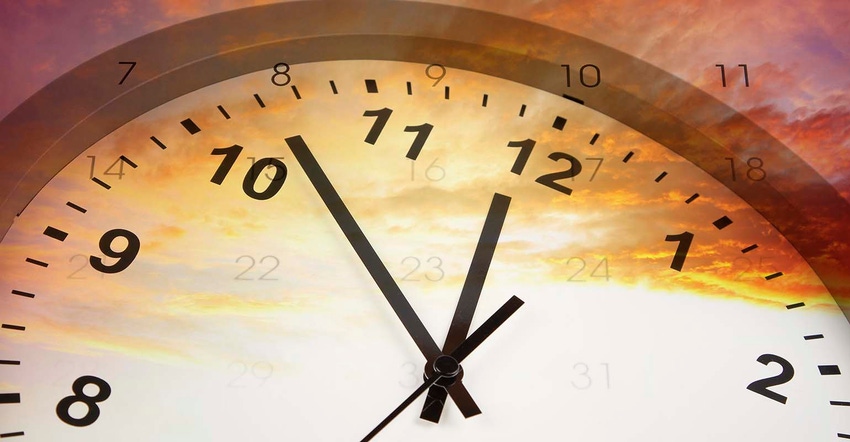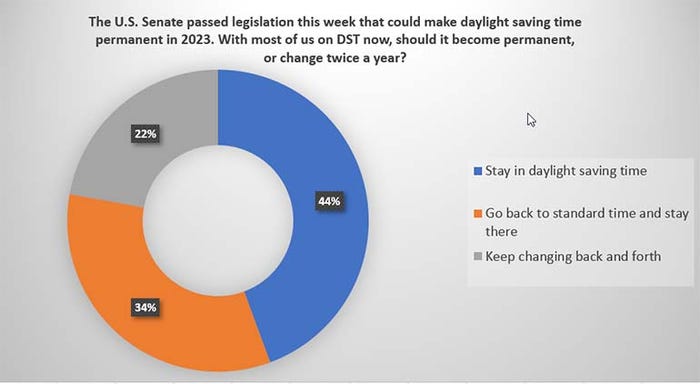March 23, 2022

The event happens twice a year – we're either springing forward or falling back depending on the time of year that time change is to happen. And when it's time to change those clocks – even though more are automatic all the time – the conversation returns. Should we keep doing daylight saving time, or should we stay with standard time?
Of course, we know Arizona and Hawaii have opted out of the whole time-change game. But so have several overseas territories of the United States including American Samoa, Guam, Northern Mariana Islands, Puerto Rico and the U.S. Virgin Islands. So for those of you in those areas, the question we asked doesn't impact you.
Here's what we asked: The U.S. Senate passed legislation this week that could make daylight saving time permanent in 2023. With most of us on DST now, should it become permanent, or change twice a year?
Just over one-fifth of respondents want to stick with status quo of changing in March and turning back in November. They could be northerners where daylight saving time is great, but in the winter having the clocks set ahead would mean some pretty dark mornings.
Just over one-third say they want to set the clocks back to standard time, then leave them there. That's a move that might crimp a few businesses who see extra time in the summer valuable including the charcoal and gas grill folks since the sun would be going down early. We're not sure if the old arguments about how the time affects cows matters as more dairies go to autonomous milkers, there's less of an hour time change for labor.
The biggest group – 44% - want to stay in daylight saving time year round. They apparently like the extra daylight in the afternoon, though that could make some winter mornings dark longer. Perhaps not having a time change is the common theme here with nearly 80% opting to lock the time in somewhere either on daylight saving time or standard time.
The Senate vote on the issue was "unanimous" but we've learned that some senators didn't know what they were voting for, so whether this shows up in the U.S. House as a bill remains to be seen.
Thanks to everyone who responded to these PANEL questions.

Let your voice be heard
The Farm Progress PANEL is your chance to share your thoughts on key issues. To take part, start by signing up for our daily mobile text service Farm Progress NOW. To do that text FARM to 20505, and be sure to respond to the text that follows we have a double opt-in system to make sure you're signed up.
Later in one of our daily update texts we'll provide information about how to sign up for the PANEL. And thanks to the respondents for helping us out.
Note: The Farm Progress PANEL is an opt-in SMS-based group. If you are a part of the panel, you may text STOP to unsubscribe.
About the Author(s)
You May Also Like






